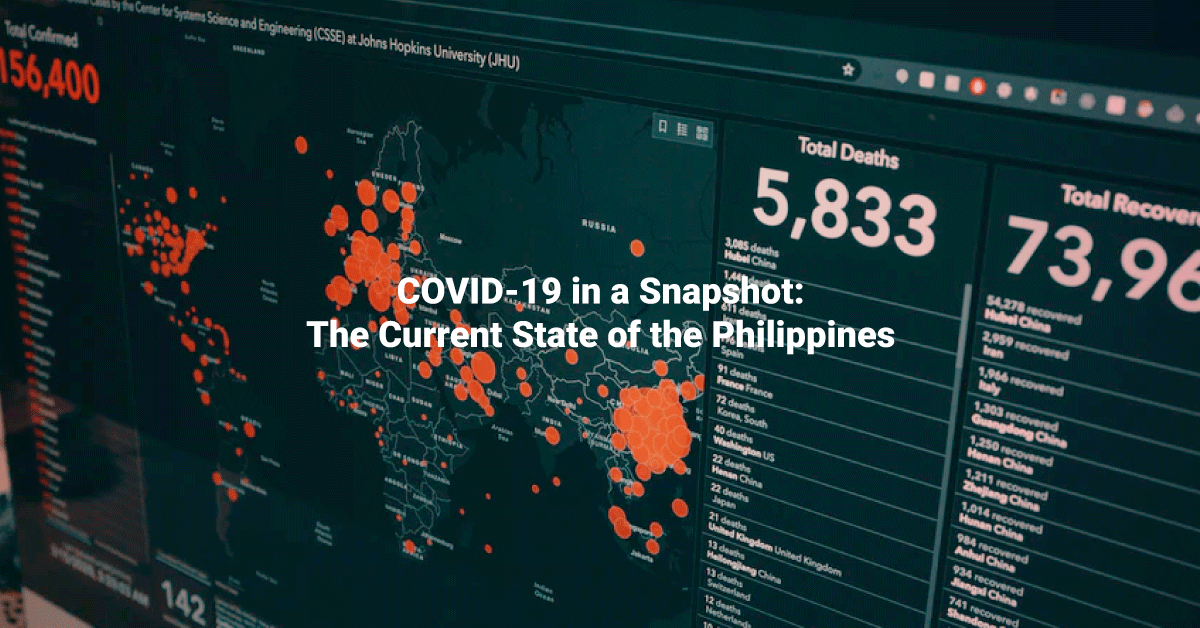It’s almost impossible not to know about the coronavirus outbreak that has spread all over the world and continues to grow in numbers. As of writing, there are now more than 200,000 confirmed cases of Coronavirus Disease 2019 (COVID-19) from over 150 countries. The whole world is now in action to contain this disease, help out all affected individuals, and look for a cure for COVID-19.
Now let’s take a closer look and put the Philippines into perspective. Our country is similarly battling the virus outbreak and is doing its best to reduce the casualties, imposing different preventive measures and declaring a state of calamity in the whole country. Let’s see how the Philippines is managing with this contagious disease.
30 Days of Enhanced Community Quarantine
The whole Luzon island was put under “enhanced community quarantine” due to the increasing number of positive cases all throughout the island. Beginning last March 17 and expiring on April 13, the community quarantine imposes strict guidelines to be followed to prevent the further spread of the disease.
The enhanced community quarantine was implemented after the continuous spread of the disease even after the “general community quarantine” of Metro Manila last March 13. Aside from Luzon, some cities and provinces in Visayas (e.g. Cebu City, Bohol) and Mindanao (e.g. Davao City, Zamboanga City) have also implemented localized quarantines in their area.
Suspension of Classes and Work in Government
Classes and other school activities in all levels have been suspended until April 15. Government work is similarly suspended except for critical services like health and emergency frontline services, border control, and police force. Some government agencies have also assembled skeletal workforces to keep services running.
On the other hand, private companies have been instructed to have more flexible working hours for their employees and to consider work-from-home arrangements.
House quarantine
A strict house quarantine is being observed until April 13, with minimal movement and contact. Mass gatherings are also prohibited, including religious, sports, and social events. Movement is limited to only accessing basic goods and availing of health services. Only one person per household is allowed to go out to buy the basic necessities.
A curfew is also enforced in Metro Manila from 8 PM to 5 AM to encourage people to stop loitering at night. Exempted from this curfew are people going to or returning from work, people buying essential supplies, people responding to emergencies, and people traveling for medical reasons. Uniformed personnel has been dispatched to enforce this curfew.
Restriction of travel
All land, air, and sea travel are restricted, with exceptions for those transporting necessary supplies or assistance. Likewise, mass public transportation systems like the MRT have been suspended, as well as public utility vehicles like jeeps and vans.
Borders between different provinces are also monitored to contain the inter-province spread of the disease.
217 confirmed COVID-19 cases (as of March 19)
A total of 217 cases have been confirmed from all over the Philippines. A majority of cases are from Metro Manila. A total of 17 COVID-19 related deaths have been reported. On the bright side, there are 7 patients that have recovered from the disease and have been discharged from the hospital.
Increase in Testing Centers and Testing kits
A scarcity in coronavirus testing kits in the country has been temporarily solved by kit donations from China and South Korea, who promise to donate thousands more in the coming days. There were reportedly only 2,000 testing kits left in the country before the donation.
Additionally, a domestically developed testing kit has been created by the National Institute of Health and the Philippine Genome Center. This has been approved by the Food and Drug Administration for immediate testing and possible mass production.
Filipino Bayanihan in Action
At the forefront of battling the virus outbreak are the brave workers manning the health and medical services, whether looking for a cure, designing a testing kit, or tending to the positive patients. The employees in grocery stores, drivers, delivery men, cleaners, journalists – all of them are the unsung heroes during this pressing time who continue to provide their services to help the ones in need.
Our bayanihan spirit just shines through as the ordinary Filipino does what he can to help with the crisis, from donation drives in social media to organizing carpools for frontliners and emergency services. With our natural sense of compassion and goodwill, everyone is doing their best to be of help in this time of need.
For the ordinary citizen, one of the easiest ways we can help with the COVID-19 pandemic is to simply stay at home, stay in the know, and share useful bits of information with others. In this state of calamity, the most important thing is that we all stay safe, informed, and vigilant.
